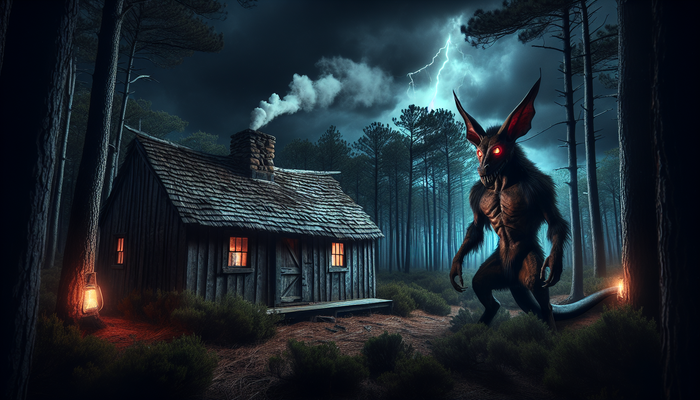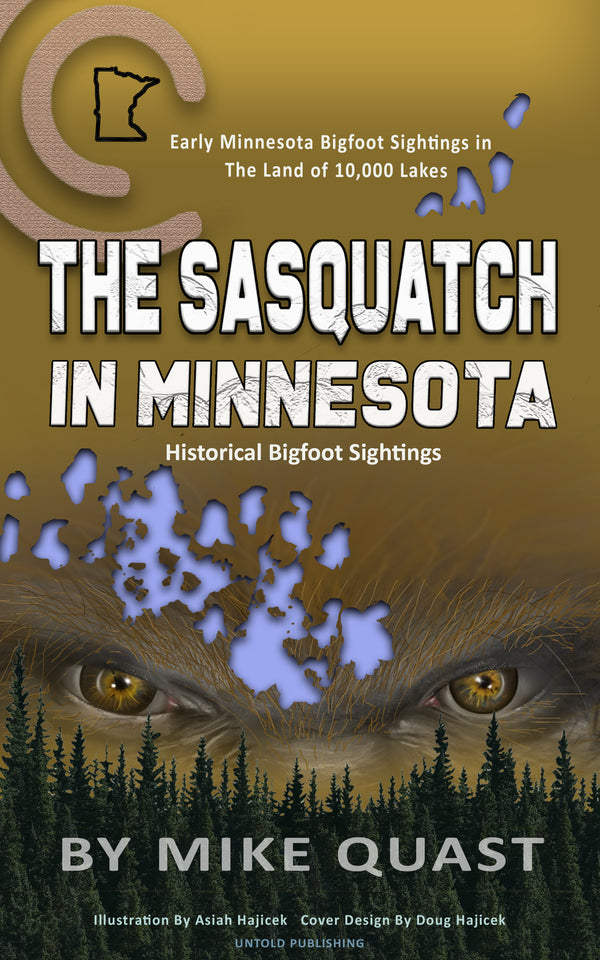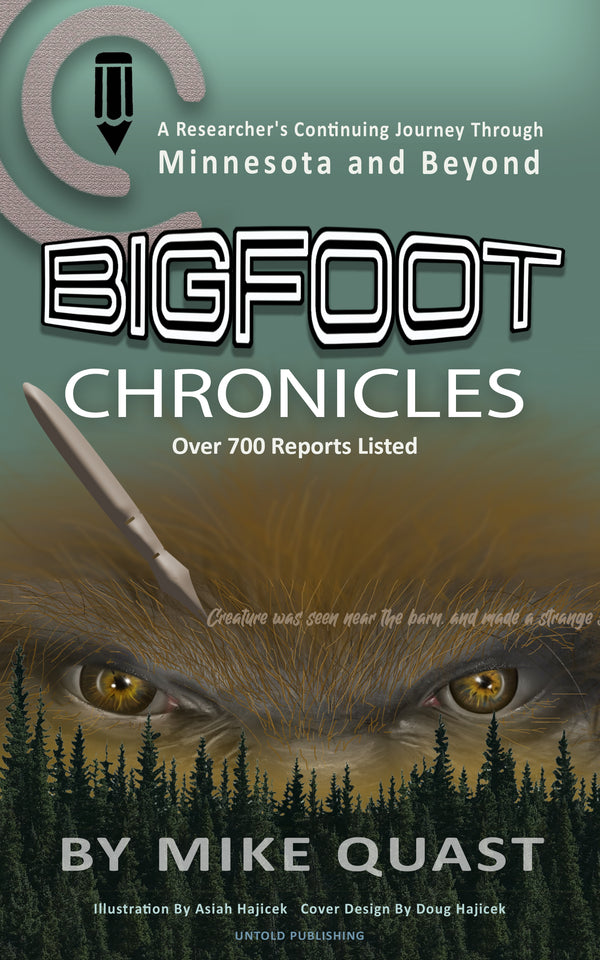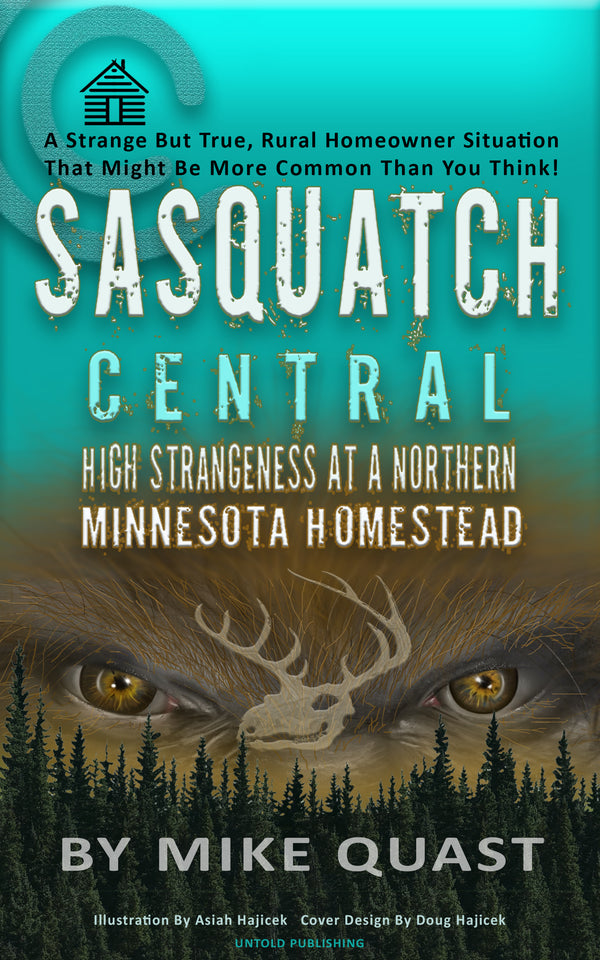North Dakota Bigfoot Sightings
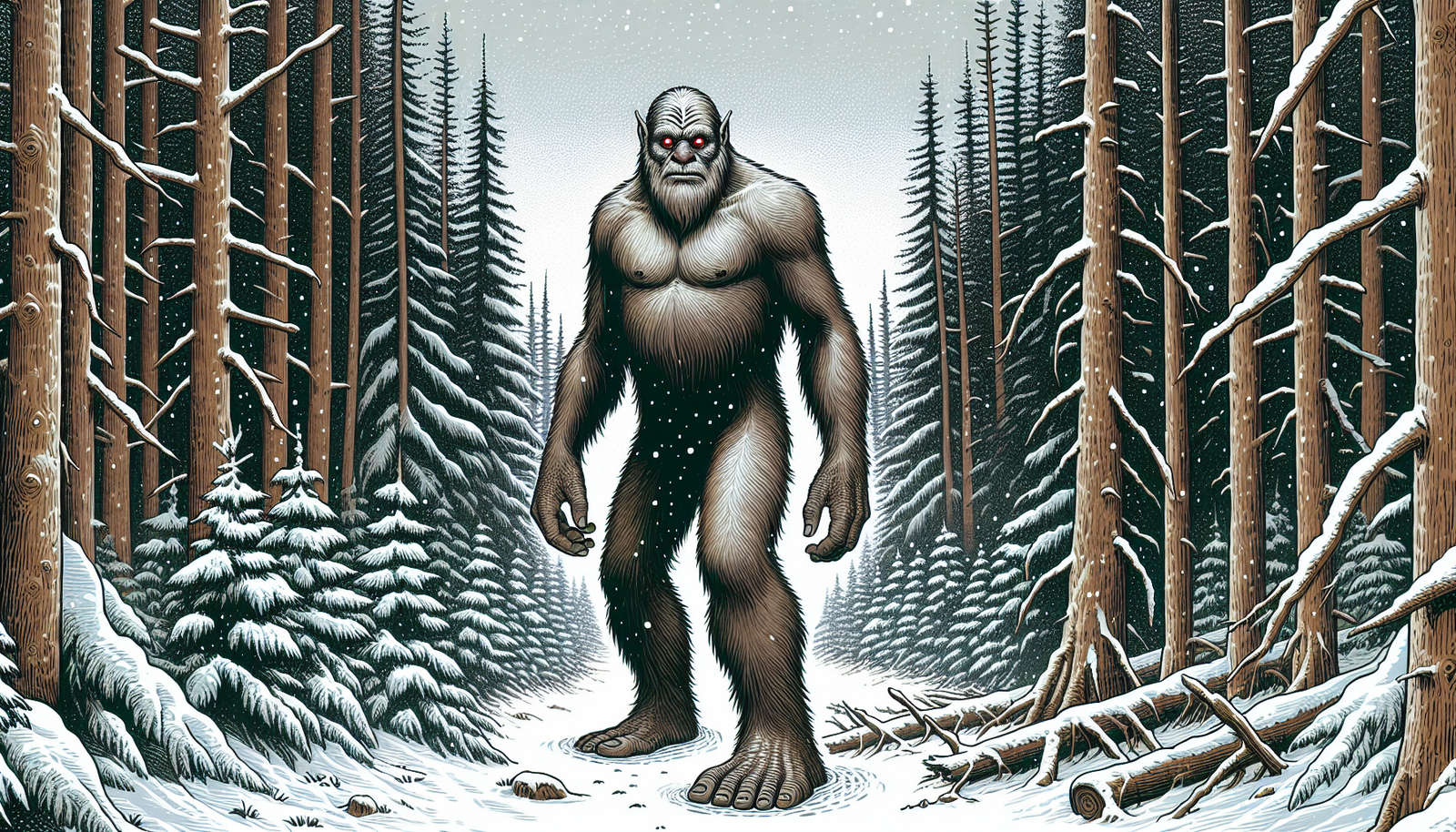
By Ava Martinez, Cryptozoologist
In the realm of cryptozoology, few creatures have captured the imagination quite like Bigfoot. This elusive, ape-like being has been the subject of countless stories, investigations, and debates, with sightings reported across North America and beyond. While the Pacific Northwest is often considered the epicenter of Bigfoot activity, one state that has surprisingly emerged as a hotspot for encounters is North Dakota, the Peace Garden State.
As a passionate cryptozoologist and educator, I have long been fascinated by the tales of Bigfoot sightings that have emerged from North Dakota's vast, sparsely populated landscapes. From the earliest recorded encounter near Minot in 1962 to the flurry of sightings along Highway 22 in 2004, the state has a rich history of Bigfoot encounters that have left both witnesses and researchers puzzled and intrigued.
In this article, I will delve into the most compelling and well-documented Bigfoot sightings in North Dakota, examining the evidence, exploring the state's unique cryptozoological lore, and attempting to unravel the mysteries surrounding these encounters. Join me on this journey as we venture into the heart of the Peace Garden State, where the line between myth and reality blurs, and the possibility of an undiscovered species lurking in the shadows tantalizes the imagination.
The Earliest Recorded Sighting: A Harrowing Encounter Near Minot (1962)
The story of Bigfoot in North Dakota begins with a chilling encounter that took place on a fateful day in April 1962. Dave Runkle and his friend were out hunting near the Minuteman Trailer Park, just outside the city of Minot, when they had an experience that would forever change their lives and mark the beginning of North Dakota's Bigfoot legacy.
As the two men made their way back to the trailer park, an unsettling feeling crept over them—the distinct sensation that they were being watched, followed by an unseen presence. Runkle, unable to shake the eerie feeling, finally mustered the courage to glance behind him. What he saw would haunt him for years to come.
There, standing before him, was a towering, black-haired creature, which Runkle initially mistook for a "great ape." The being, as described by Runkle, was incredibly tall, with long arms and a face devoid of hair. But it was the creature's expression that truly chilled Runkle to the core—a look of pure malevolence, as if it harbored ill intentions towards the two men.
As the creature began to move towards them, Runkle and his friend, gripped by an all-consuming terror, turned and sprinted back to the safety of the trailer park, never daring to look back. This harrowing encounter, classified as a "Class A" sighting by the Bigfoot Field Researchers Organization (BFRO), would set the stage for the numerous Bigfoot reports that would emerge from North Dakota in the decades to come.
The Minot sighting is significant not only because it is the earliest recorded Bigfoot encounter in the state but also because it establishes a pattern that would be repeated in future sightings—a creature of imposing stature, covered in dark hair, and possessing an aura of menace. This encounter, etched into the memories of those involved, would serve as a catalyst for further investigations and a growing interest in the possibility of Bigfoot's presence in North Dakota.
The 2004 Sighting Spree: A Flurry of Encounters Along Highway 22
Fast forward to February 2004, and the quiet stretches of Highway 22 in North Dakota became the stage for a series of Bigfoot sightings that would reignite interest in the creature's presence in the state. Over the course of just three days, multiple witnesses reported encountering a large, bipedal creature along a 35-mile stretch of the highway, leaving researchers and locals alike puzzled and intrigued.
The first incident occurred on February 22nd, when Dennis Fox Jr., a tribal government employee, stumbled upon a set of massive footprints in the snow, approximately 10-15 miles south of the town of Mandaree. The tracks, measuring an impressive 5-6 feet in stride, were unlike anything Fox had ever seen before. Recognizing the potential significance of his discovery, he promptly photographed the prints and alerted the local authorities.
As word of the strange footprints spread, more sightings began to pour in. The following day, February 23rd, an unconfirmed sighting was reported near Mandaree, adding to the growing sense of unease in the community. But it was the events of February 24th that would truly cement the Highway 22 sightings as a defining moment in North Dakota's Bigfoot history.
On that fateful day, two men driving along Highway 22 reported seeing a Bigfoot-like creature near a trailer court. The sighting was corroborated by an adult female and a child, lending credence to the men's account. This encounter, along with the previous sightings, painted a picture of a creature on the move, traversing the rugged terrain of western North Dakota with purpose and intent.
The cluster of sightings within such a short timeframe and confined geographical area is truly remarkable, suggesting that whatever was responsible for these encounters was not merely a figment of the imagination. The consistency of the descriptions—a large, bipedal creature covered in hair—further supports the notion that something extraordinary was afoot along Highway 22.
The Highway 22 sighting spree remains one of the most compelling and well-documented series of Bigfoot encounters in North Dakota's history. The sheer number of witnesses, the proximity of the sightings, and the physical evidence left behind in the form of footprints all contribute to the enduring mystery surrounding these events. As researchers and enthusiasts continue to investigate and analyze the Highway 22 sightings, the question remains: what exactly was stalking the highways and byways of western North Dakota in February 2004?
The Mysterious Tracks and the Tragic Aftermath
In the wake of the Highway 22 sighting spree, the discovery of the massive footprints left by the creature added another layer of intrigue to the already perplexing series of events. The tracks, meticulously documented by Dennis Fox Jr., provided tangible evidence of the creature's presence and hinted at its impressive size and weight.
The footprints, measuring 18 inches long and 8 inches wide, with a stride of approximately 4 feet, painted a picture of a being of considerable stature and mass. The depth of the impressions left in the snow suggested that whatever made them was no lightweight, but rather a creature of substantial bulk and power.
Intrigued by the discovery, the elder witness, a 49-year-old man, gathered his nephew and several friends to investigate the tracks further. The group set out to follow the trail of footprints, marveling at the sheer size and clarity of the impressions. As they traced the creature's path, they found themselves walking in the steps of a being that seemed to defy conventional explanation.
For nearly 300 yards, the group followed the line of tracks, each footprint a testament to the creature's existence. The clarity and consistency of the impressions left little doubt in their minds that they were dealing with something extraordinary—a being that walked on two legs and possessed a stride far greater than that of any human.
However, the story of the mysterious tracks took a tragic turn just days after the initial discovery. The elder witness, who had been so eager to unravel the mystery of the footprints, suddenly passed away from a brain aneurysm. The news of his untimely death sent shockwaves through the community, with many speculating about the possible connection between his passing and the Bigfoot encounter.
The elder witness's death added a somber note to the already enigmatic series of events surrounding the Highway 22 sightings. Some members of the community even went so far as to suggest that the creature was somehow responsible for the man's demise, a theory that, while unsubstantiated, speaks to the deep-seated fear and awe that Bigfoot evokes in the hearts and minds of those who have encountered it.
The mysterious tracks and the tragic aftermath of the Highway 22 sightings serve as a poignant reminder of the power and allure of the unknown. The footprints, meticulously documented and followed, provide tangible evidence of a creature that seems to defy explanation, while the elder witness's untimely death adds a layer of tragedy and mystery to an already perplexing series of events.
As researchers and enthusiasts continue to ponder the significance of the tracks and the events surrounding their discovery, one thing remains clear: the Highway 22 sightings and the mysterious footprints left in their wake have forever changed the landscape of Bigfoot research in North Dakota, cementing the state's place in the annals of cryptozoological history.
The Taku-He: North Dakota's Unique Bigfoot Variant
While the Bigfoot phenomenon is well-known across North America, North Dakota lays claim to its own unique variant of the creature, known as the Taku-He. This enigmatic being, deeply rooted in the traditions and folklore of the Lakota people, adds a fascinating layer to the state's already rich tapestry of cryptozoological lore.
The name "Taku-He" itself is steeped in meaning and significance. Derived from the Lakota language, it translates to "big man," a fitting moniker for a creature said to tower over humans and possess an imposing, muscular physique. The Taku-He's place in Lakota culture is one of duality, with some stories depicting it as a benevolent guardian spirit, watching over the land and its inhabitants, while others paint a more sinister picture of a malevolent entity that preys upon both humans and animals alike.
Descriptions of the Taku-He's appearance are remarkably consistent, with eyewitnesses reporting a creature that stands between 7 and 9 feet tall, covered in a thick coat of hair, and possessing a large, flat-faced head. The being's powerful build and long, muscular arms are said to be particularly striking, hinting at a creature that is both physically imposing and well-adapted to its environment.
The modern era of Taku-He sightings began in the 1970s, when a film crew scouting locations for a zombie movie near the Sica Hollow State Park stumbled upon a set of massive footprints. The discovery sparked a wave of interest in the creature, with locals coming forward to share their own experiences and encounters with the Taku-He.
One of the most chilling accounts comes from a man named LeMar Bear Ribs, who claimed to have had a face-to-face encounter with the creature while walking home one night. Bear Ribs described the Taku-He as a "big hairy man" that, upon locking eyes with him, caused him to suffer a seizure. The intensity of the encounter was such that Bear Ribs required medical attention, with two women who had also witnessed the creature corroborating his story.
The Taku-He's presence in North Dakota folklore and the modern sightings that have brought it into the public eye serve as a testament to the enduring power of cryptozoological mysteries. The creature's unique characteristics and its deep ties to Lakota culture set it apart from the more widely known Bigfoot, adding a layer of regional flavor and intrigue to the larger tapestry of cryptid lore.
As researchers and enthusiasts continue to investigate the Taku-He and its place in North Dakota's cryptozoological landscape, the creature's dual nature—as both guardian and predator—serves as a reminder of the complex relationship between humans and the unknown. The Taku-He, like so many other cryptids, occupies a liminal space between the realms of myth and reality, inviting us to question our assumptions about the world around us and the creatures that may lurk just beyond the edges of our understanding.
The Miniwashitu: North Dakota's Elusive River Monster
While tales of Bigfoot and the Taku-He have long captured the imaginations of North Dakotans and cryptozoology enthusiasts alike, there is another, lesser-known creature said to lurk beneath the surface of the state's waterways: the Miniwashitu, or the Missouri River Monster.
The Miniwashitu's origins can be traced back to the ancient myths and legends of the Dakota people, predating even the arrival of European settlers on the continent. These oral traditions speak of a fearsome, aquatic beast that dwells in the depths of the Missouri River, rarely seen by human eyes but always lurking just beneath the surface, waiting to strike fear into the hearts of those who dare to venture too close.
One of the earliest written accounts of the Miniwashitu comes from the works of Melvin Randolph Gilmore, a renowned cultural anthropologist and former curator of the North Dakota State Historical Society. In 1921, Gilmore documented the legend of the creature, describing it as a "mysterious being within the stream of the Missouri River" that was "seldom seen by human beings, and was most dreadful to see."
According to Gilmore's account, the Miniwashitu was a truly terrifying sight to behold. The creature was said to be covered in a thick coat of red hair, with a single, piercing eye in the center of its forehead and a sharp, horn-like protrusion jutting out from above. Its back was lined with a jagged, saw-like spine, adding to its already fearsome appearance.
The Miniwashitu's reputation was one of terror and awe, with those who claimed to have seen the creature often meeting a grim fate. It was said that a mere glimpse of the beast could drive a person mad, their minds unraveling as they struggled to comprehend the sheer horror of what they had witnessed. Many who encountered the Miniwashitu were said to have died soon after, their bodies and minds unable to cope with the trauma of the experience.
Yet, despite its fearsome reputation, the Miniwashitu was not seen as an entirely malevolent entity. In fact, the creature was believed to play a crucial role in the cycle of life along the Missouri River. According to legend, the Miniwashitu's movements in the spring were responsible for breaking up the thick ice that covered the river during the long, cold months of winter, allowing for the return of fishing and trade.
This duality—the Miniwashitu as both a source of terror and a necessary force of nature—speaks to the complex relationship between the Dakota people and the creatures that inhabited their world. The Missouri River Monster, like so many other cryptids, embodied the mysteries and dangers of the natural world, serving as a reminder of the delicate balance between humans and the environment.
While modern sightings of the Miniwashitu are rare, the legend of this enigmatic river monster continues to captivate those who are drawn to the mysteries of North Dakota's waterways. The creature's enduring presence in the state's folklore and the tales of its fearsome appearance and uncanny abilities have cemented its place in the annals of cryptozoological history.
As we continue to explore the rich tapestry of North Dakota's cryptid lore, the Miniwashitu serves as a reminder of the many mysteries that still lurk beneath the surface of our world. Whether a product of ancient myth or a creature that truly inhabits the depths of the Missouri River, the legend of the Miniwashitu endures, inviting us to ponder the secrets that may lie hidden in the murky waters of the unknown.
From Bigfoot to UFOs: Hangar 1 Publishing Has You Covered!
Explore Untold Stories: Venture into the world of UFOs, cryptids, Bigfoot, and beyond. Every story is a journey into the extraordinary.
Immersive Book Technology: Experience real videos, sights, and sounds within our books. Its not just reading; its an adventure.





